
Sun Prairie is a city in Dane County in the U.S. state of Wisconsin. A suburb of Madison, it is part of the Madison Metropolitan Statistical Area. The city's population was 35,967 at the 2020 U.S. Census. It is the second-most populous city in Dane County after Madison.

Fort Crawford was an outpost of the United States Army located in Prairie du Chien, Wisconsin, during the 19th century.

Bush Brothers and Company is a family-owned corporation best known for its Bush's Best brand canned baked beans. The company produces approximately 80 percent of the canned baked beans consumed in the United States, representing estimated annual sales in excess of $400 million and the processing of more than 55 million pounds of beans per year. In addition, the company also offers other canned beans, as well as peas, hominy, and cut green beans. Based in Knoxville, Tennessee, Bush Brothers operates plants in Augusta, Wisconsin and Chestnut Hill, Tennessee. Its canned goods are sold through retail food outlets and food service operators throughout the United States and Canada.
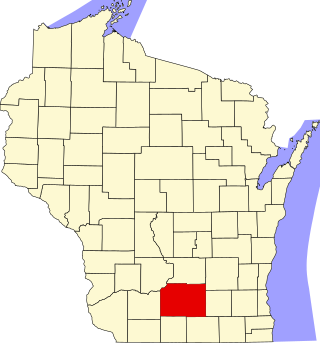
This is a list of the National Register of Historic Places listings in Dane County, Wisconsin. It aims to provide a comprehensive listing of buildings, sites, structures, districts, and objects in Dane County, Wisconsin listed on the National Register of Historic Places.

Princes Group is an international food and drink group involved in the manufacture, import and distribution of branded and customer own-brand products. Founded in 1880 and headquartered in the UK, since 1989 it has been owned by the Japanese conglomerate Mitsubishi Corporation.
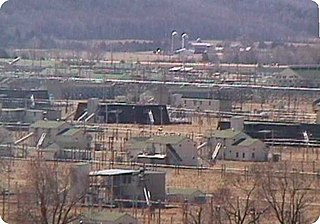
The Badger Army Ammunition Plant or Badger Ordnance Works (B.O.W.) is an excess, non-BRAC, United States Army facility located near Sauk City, Wisconsin. It manufactured nitrocellulose-based propellants during World War II, the Korean War, and the Vietnam War. It was a large munitions factory during World War II. As of 2013, the facility was in the end stages of demolition and remediation in preparation for property transfer.
Bernard Walter Brisbois was an agent for the American Fur Company.

The Astor Fur Warehouse is a historic fur warehouse located at Bolvin and Water Streets on St. Feriole Island in Prairie du Chien, Wisconsin. Jean Joseph Rolette, an agent of the American Fur Company, built the warehouse in 1828. The warehouse was used until the mid-19th century; it has since been incorporated into the Villa Louis museum. The building, now a National Historic Landmark, is the only known surviving fur trade warehouse in the upper Mississippi valley.

Prairie Avenue is a north–south street on the South Side of Chicago, which historically extended from 16th Street in the Near South Side to the city's southern limits and beyond. The street has a rich history from its origins as a major trail for horseback riders and carriages. During the last three decades of the 19th century, a six-block section of the street served as the residence of many of Chicago's elite families and an additional four-block section was also known for grand homes. The upper six-block section includes part of the historic Prairie Avenue District, which was declared a Chicago Landmark and added to the National Register of Historic Places.

The Old Main Street Historic District in Racine, Wisconsin is an area including a section of Main Street and which is roughly bounded by Second St., Lake Ave., Fifth St., and Wisconsin Ave. It is a 17-acre (6.9 ha) area with elements dating back to 1847. It was listed on the National Register of Historic Places in 1987.

Conservas La Costeña, usually called La Costeña, is a Mexican brand of canned products. It was founded in 1923 by Vicente López Recines. The company has become an important brand inside and outside Mexico. Nowadays, La Costeña sells its products across Mexico and in 40 countries around the world. While all its products in the beginning were chilies, the company later began producing new products such as beans, ketchup, vegetables and others. The production plants have been modified also, in addition there is the fact that the factories have won some recognitions for the changes in technology and process.

The Portland Packing Company Factory is an historic factory building at 14-26 York Street in Portland, Maine. It was added to the National Register of Historic Places in 1996. Built in 1884, it was home to Maine's oldest and largest vegetable canning company until 1927. After years of neglect, it was rehabilitated in 1995-6. It was listed on the National Register of Historic Places in 1996.
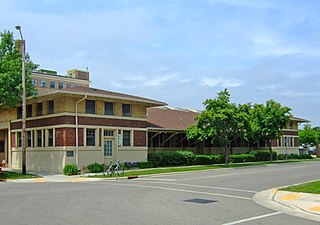
Madison's City Market was built in 1909 as a city-owned enclosed farmers' market a half mile northeast of the capitol. It was designed in Prairie Style by Robert Wright. In 1978 it was added to the National Register of Historic Places.

The Libby, McNeill and Libby Fruit and Vegetable Cannery was a cannery operated in Sacramento, California by Libby, McNeill, and Libby. The building is now listed on the National Register of Historic Places.
Edgett-Burnham Canning Company, was founded in 1863 as the Wayne County Preserving Co. by Ezra Edgett of Camden, New York. The company was located all during its history, in Wayne County, New York.

Farm No. 1, Iowa Men's Reformatory, also known as the West Farm, is located west of Anamosa, Iowa, United States. It was listed as a historic district on the National Register of Historic Places in 1992. At the time of its nomination the district consisted of 10 resources, including seven contributing buildings, and three non-contributing buildings. When the property for the reformatory was acquired by the State of Iowa in 1872 it included 61 acres (25 ha) of farmland. Farming at the facility did not become a significant enterprise here until the turn of the 20th century. Before then the prisoners maintained a vegetable garden within the walls, and they raised sixty-five hogs. The state bought 80.31 acres (32.50 ha) of land in 1904 for farming operations and built a hog house and a stone barn, both are no longer extant. Minimum security prisoners did the farm work. The historic buildings were built between 1912 and 1939. They are all stone structures built in a simplified Romanesque Revival style. The influence of the style is found in the "heavy massing, texture of the stone, and the window, door, and corner treatments." The buildings were built for the following uses: South barn, barn granary (1915), root cellar (1919), North barn, slaughter house (1921-1922), processing plant (1922), and the seed house, dining hall, cold frame (1939).
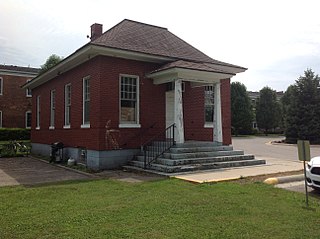
The W.R. Roach Cannery Warehouse and Office Building is an industrial structure located at 89 East Sanborn in Croswell, Michigan. It was listed on the National Register of Historic Places in 2005, and now contains apartments, known as Cannery Village.

The Sun Prairie Water Tower was built in 1899 in Sun Prairie, Wisconsin. It was added to the State Register of Historic Places in 1999 and to the National Register of Historic Places the following year.
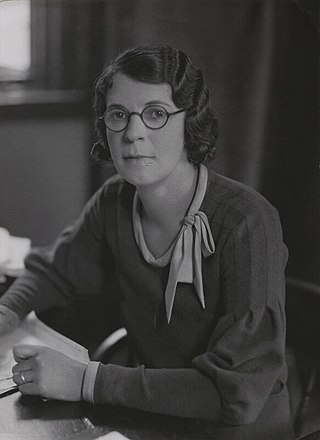
Ella Hudson Gasking, née Batchelor, was a prominent British businesswoman in the food manufacturing sector as chairman and managing director of Batchelors, and was one of Sheffield's best-known industrialists in the 20th century. She was known in business as Mrs E. H. Gasking.

The Harley-Davidson Motorcycle Factory Building was the original Harley-Davidson motorcycle factory constructed in Milwaukee, Wisconsin, in 1906. The factory was located at what is now 3700 W. Juneau and it was regularly expanded with additions in the early 1900s. It was added to National Register of Historic Places on November 9, 1994.



















